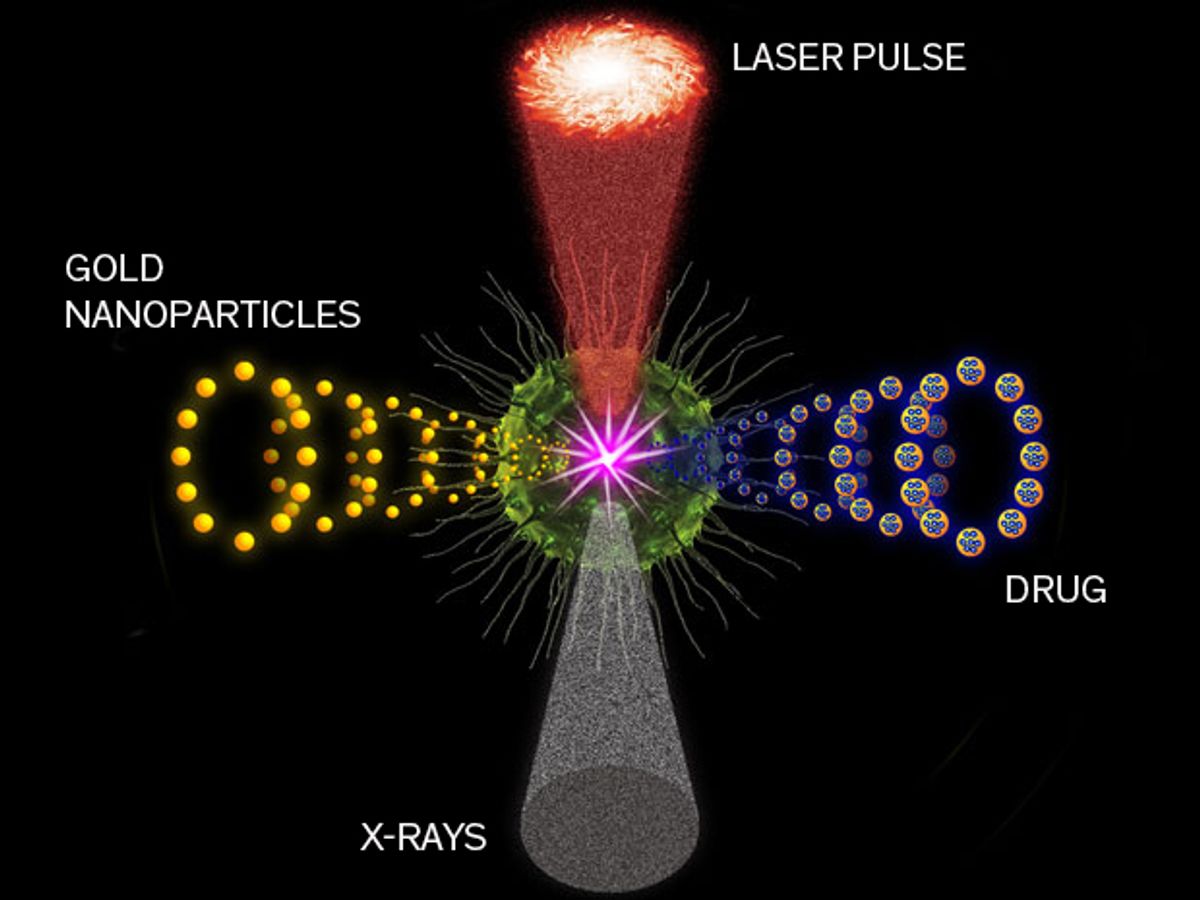Two years ago, researchers at Rice University, led by Dmitri Lapotko, a physicist and biochemist, developed a novel method for killing cancer cells. The technique relies on gold nanoparticles infiltrating cancerous cells. When a laser is shone on those cells, tiny bubbles surround them and explode, thereby ripping the cancerous cells apart. If the bursting bubbles don't completely destroy the cancer cell, the weakened state it's left in by the explosions makes it more susceptible to chemotherapy drugs.
Now Lapotko and his colleagues are reporting the results of pre-clinical trials using the technique, dubbed “quadrapeutics.” The term stems from the use of four tools in the destruction of the cancer cells: gold nanoparticles, laser pulse, x-ray, and a drug.
Chemotherapy is actually the first step in the four-pronged attack. In the case of the Rice pre-clinical trials, doxorubicin and paclitaxel were used.
After the drugs are introduced, the protocol works by tagging the gold nanoparticles with antibodies that target specific cancer cells and attach to the cells' surfaces. The cancer cells begin to ingest the nanoparticles, which are stored just beneath the cells’ protective outer membranes.
The cancer cells are then fired upon with near-infrared laser pulses. The near-infrared light is able to penetrate human tissue but the gold nanoparticles can’t absorb that wavelength of light. Instead, the light excites the free electrons on the gold nanoparticles so that there are collective oscillations that generate excess heat. This material effect is known as plasmonics.
Unlike recent research out of ETH Zurich in Switzerland in which this plasmonic effect with near-infrared light and gold nanoparticles was used to turn up the heat on the cancer cells to kill them, the Rice approach doesn’t depend on heat. Instead, Lapotko's team focuses on the destruction of cancer cells through intracellular explosions. In this way, only the cancer cells are destroyed and not nearby healthy cells that might otherwise be killed by the heat.
A video describing the method and presenting images of how the cancer cells are blown apart are provided in the video below.
“What kills the most-resistant cancer cells is the intracellular synergy of these components and the events we trigger in cells,” Lapotko said in a press release. “This synergy showed a 100-fold amplification of the therapeutic strength of standard chemoradiation in experiments on cancer cell cultures.”
In the research, which was published in the journal Nature Medicine, the team applied the technique to head and neck squaomous cell carcinoma, which is a lethal form of cancer that recently had grown immune to traditional chemotherapies. The results showed that the quadrapeutic therapy caused cancerous tumors in mice to be destroyed within one week—even though the researchers used only 3 percent of the typical drug dosages and 6 percent of the typical radiation doses.
The effectiveness of the quadrapeutic therapy should not be limited to just this particular form of cancer, say the researchers. Lapotko believes that the treatment could be applied to various solid tumors, especially those that have proven hard-to-treat, such as brain, lung, and prostate cancer.
Dexter Johnson is a contributing editor at IEEE Spectrum, with a focus on nanotechnology.



